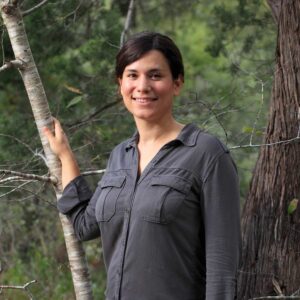Shade in short supply? The plants you pick for a sunny spot must be able to handle sporadic rainfall and scorching summer heat. The WaterSaver Landscape Coupon can help you choose plants that are up to the task.
Gardening in central Texas in full sun is no joke. The plants you choose must be able to handle our unique soils, spontaneous rainfall, scorching summer heat and still look good doing it!
Our WaterSaver Landscape Coupon is the perfect, low-maintenance option for people hoping to use less water, improve the aesthetic of their home and provide a sanctuary for beneficial wildlife such as birds, butterflies and bees!
Step 1:
Simply convert 200 square feet of water-thirsty turf grass into beautiful drought-tolerant plant beds or pervious stone patios.
Step 2:
Once you’ve identified an area you’d like to plant, remove any existing irrigation in that area by capping and/or adjusting any sprinkler heads that water that area. Also, remove existing grass in the area.

Step 3:
When choosing plant material for full sun, select some evergreen plants that provide year-round interest so your yard doesn’t look barren in winter and to provide structural diversity. A few of my personal favorites are, spanish dagger, big bend yucca, possumhaw holly, mountain laurel, twist-leaf yucca, sotol, cenizo, red yucca, Havard’s agave, gulf muhly grass, Lindheimer’s muhly grass and nolina. All of these are incredibly tough and many are native to central Texas.

Now choose some sun-loving, colorful flowering plants to liven up the area a bit — there are many to choose from. Some of my favorites are native antelope horn milkweed (Asclepias asperula),butterfly weed (Asclepias tuberosa), mealy blue sage, autumn sage, Gregg’s mistflower and damianita.

It’s easiest to select the plants you want in your yard, determine how many of each you need and then sketch a bird’s eye view of the area starting with the larger specimens. Larger plants are generally placed at the center of the bed if the bed is going to be viewed from all angles, or near the back of the bed if it’s adjacent to your home. Once the larger plants are down on paper, begin to fill in with the smaller plants to complete the drawing. Remember to consider the mature size of the species you’re planting.

Step 4:
When designing, also consider the unique aesthetic of your yard. Some people prefer to plant en masse while others prefer diversity of color, shapes and textures. A classic technique to create diversity and order is to use an odd number of plants — 3, 5 or 7.

Step 5:
After receiving your coupon, head to a participating nursery and select a minimum of 15 plants. Besides lengthening the coupon time period, we’ve also expanded the plant list. There are now nearly 100 plant species and cultivars to choose from!
Whatever your preference, make sure there are 15 plants in the 200 square foot bed. Also, you may be eligible for up to eight coupons to use. Think about installing another similar bed adjacent to the first one or in another area of the yard.


